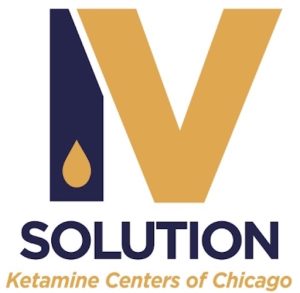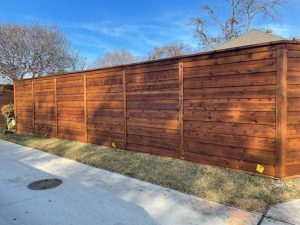Carrot LASIK & Eye Center is shedding light on one of the most important but often overlooked aspects of refractive surgery—the material used in the implantable lens itself. In its latest article, EVO ICL Materials: Why Collamer Makes the Difference, the Mesa, Arizona-based practice outlines how the unique composition of Collamer contributes to the long-term safety, performance, and patient satisfaction of the EVO ICL procedure. For individuals who are not candidates for LASIK due to thin corneas, high myopia, or other concerns, EVO ICL represents a proven, minimally invasive solution—and the lens material plays a critical role in that success.
Unlike traditional corrective procedures that reshape or remove corneal tissue, EVO ICL (Implantable Collamer Lens) is placed inside the eye, preserving the integrity of the cornea. The key to its compatibility and effectiveness lies in Collamer, a proprietary material composed of purified collagen, poly-HEMA, water, and a UV-absorbing chromophore. Carrot LASIK & Eye Center emphasizes that this material was specifically engineered to work in harmony with the natural anatomy of the human eye. Patients benefit from a lens that is soft, flexible, and highly biocompatible—important characteristics that help reduce inflammation, discomfort, and long-term complications.
One of the standout properties of Collamer is its ability to attract fibronectin, a naturally occurring protein that forms a protective layer on the lens surface. This helps shield the implant from being targeted by the body’s immune system, minimizing inflammatory responses and lowering the risk of visual impairment due to protein buildup. Additionally, Collamer carries a slight negative ionic charge, which repels unwanted protein deposits in the aqueous humor. These features collectively help maintain long-term clarity and comfort for patients who choose EVO ICL over more traditional vision correction methods.
Another major advantage of Collamer is its optical performance. Because the material closely mimics the refractive qualities of the natural lens and integrates well with the internal structures of the eye, it delivers sharp, stable vision across a wide range of prescriptions. At Carrot LASIK & Eye Center, patients who previously relied on strong glasses or contact lenses have reported dramatic improvements in visual acuity and quality of life after undergoing EVO ICL. The procedure is particularly beneficial for individuals with high myopia or astigmatism, for whom other surgical options may not be suitable or safe.
In a region with abundant sunlight like Arizona, UV protection is another critical factor in long-term eye health. Carrot LASIK & Eye Center highlights that Collamer’s built-in UV-blocking component offers protection from harmful rays that can contribute to the development of cataracts and other degenerative conditions. While sunglasses can help, having an intraocular lens with embedded UV filtration provides an added layer of defense—especially for patients who are active outdoors or spend long hours in bright environments.
EVO ICL also offers distinct advantages over older implant materials like acrylic or silicone. These older materials can be stiffer and more prone to irritating the surrounding tissues, leading to discomfort and a higher rate of postoperative complications. In contrast, the flexibility and softness of Collamer allow the lens to be inserted through a smaller incision, which reduces surgical trauma and speeds up recovery. This also makes the procedure reversible—another key point that Carrot LASIK & Eye Center emphasizes during patient consultations. Should vision needs change in the future or if new technologies emerge, the lens can be removed or replaced without having altered the corneal structure.
For patients who are frustrated by the limitations of glasses and contact lenses—such as fogging, dryness, or frequent prescription changes—EVO ICL provides a reliable, low-maintenance alternative. Once implanted, the lens does not require care or replacement, and it eliminates the daily hassles associated with other corrective methods. Carrot LASIK & Eye Center uses advanced diagnostic tools, including corneal topography and wavefront analysis, to determine candidacy and ensure the best possible outcomes for each individual patient.
The article underscores that EVO ICL is not just a technical procedure—it’s a personalized solution designed to meet the long-term vision needs of patients who want freedom from glasses or contacts. And while many vision correction options exist, the material science behind EVO ICL makes it uniquely effective for patients who have been told they’re not a candidate for LASIK or PRK. At Carrot LASIK & Eye Center, the focus is always on what’s best for the patient’s long-term eye health and quality of life.
Reporters interested in covering advancements in refractive surgery or exploring the role of biomaterials like Collamer in ophthalmology are encouraged to reach out to Carrot LASIK & Eye Center for expert commentary or patient stories. With an experienced surgical team and a strong focus on individualized care, the practice is a trusted source for information on cutting-edge solutions like EVO ICL.
Patients who have been told they are not candidates for LASIK—or who are looking for a permanent, low-maintenance solution to correct nearsightedness or astigmatism—can schedule a consultation with Carrot LASIK & Eye Center to see if EVO ICL with Collamer is the right choice. The center’s approach combines advanced technology with a clear commitment to patient education, safety, and outcomes. By highlighting what sets EVO ICL and the Collamer material apart, this press release aims to bring awareness to a refractive option that many still don’t know exists—but should.
The post Collamer Sets EVO ICL Apart: Carrot LASIK & Eye Center Highlights the Lens Material That’s Changing Vision Correction appeared first on DA80 Hub.













